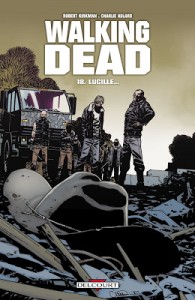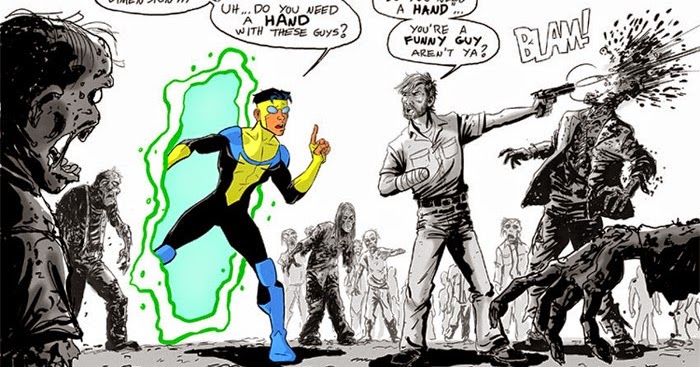

Naturally, Invincible was always a hot target for adaptation, particularly after AMC hit Kirkman zombie paydirt with The Walking Dead. Nary does a bone go uncrunched or an intestine un-ripped out in Kirkman and Ottley’s hyper visceral world. Though the images may be colorful, the action depicted within them are shocking in their brutality.

Ryan Ottley’s art in Invincible has a deep, abiding respect for the physics of super powers. There’s also the violence… oh the sweet, sweet violence. Mark is a very likeable, yet believably flawed young man.Kirkman’s sprawling 144-issue narrative meticulously follows Mark’s maturation and the ethical questions raised by a universe fit-to-bursting with invulnerable ubermensches. What sets I nvincible apart, however, is its dedication to realistic storytelling. The series begins with Mark eagerly anticipating the arrival of his own superpowers and then embarking on an adventure of super self discovery, alongside a host of heroic allies and terrifying villains. Omni-Man, an alien from the planet Viltrum and now Earth’s most powerful superhero (of which there are many).

At first glance, it’s a very conventional comic book story. The appeal of Invincible can be hard to describe. The story of Mark Grayson ran, uninterrupted and with very few side arcs, for 15 years before concluding with issue #144 in 2018. The character graduated to his own regular series in 2003, first illustrated by Cory Walker, and then by the prolific Ryan Ottley.

Invincible first premiered in a preview as part of Image Comics’ Savage Dragon #102, more than a full year before Kirkman’s black and white zombie blockbuster The Walking Dead debuted.


 0 kommentar(er)
0 kommentar(er)
